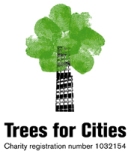Find Your Borough's Oldest Trees
Take part in the London Ancient Tree Hunt
The Ancient Tree Hunt has teamed up with organisations in the capital to enable Londoners to find and help protect the oldest trees in their neighbourhoods.
Leading the way in the Ancient Tree Hunt's urban recording push for 2010, with the support of the Mayor of London, Boris Johnson, the capital will be searching for its oldest trees across all 33 boroughs to highlight the hidden wealth of associated wildlife on people’s doorsteps and the importance of city tree protection – important messages for International Year of Biodiversity Week.
The scheme launches in London on 19 May 2010, when borough residents can start looking for ancient trees and uploading their locations to the online database or posting forms to the Woodland Trust, and runs until October 2011.
Boris Johnson, Mayor of London said:
“Trees are part of the lifeblood of our city, giving house-room to a huge variety of wildlife, as well as beautifying our parks and streets. I am happy to lend my support to this celebration of London's ancient green giants recognising the vital role they play. Let’s hope too that in 300 years time Londoners will be marking the tercentenary of some of the 10,000 street trees we are planting by March 2012.”
The Greater London Authority, Forestry Commission, Trees for Cities, Tree Council and Greenspace Information for Greater London have joined the Woodland Trust’s Ancient Tree Hunt project.
Edward Parker, Ancient Tree Hunt project manager at the Woodland Trust, said:
“We are delighted to be joined by such an important group of organisations in our urban tree recording efforts this year and to receive public support for the project from the Mayor of London.”
All Londoners have to do is attend a training session in a local green space, where a tree expert will talk them through the telltale signs of an ancient tree and give guidance on how to estimate their age before they can get searching across their local area.
Edward Parker said:
“Our aim in the capital is to highlight the many great trees there – the well known ones as well as the ones found in unexpected places – and to show just how close and accessible some of them are to people’s homes and places of work.
“We also want to showcase the vital and irreplaceable role which old trees play in hosting a wealth of wildlife even in the middle of a city. They are literally nature reserves on people’s doorsteps, and once removed or fragmented, the ecology associated with them is isolated and cannot survive.”
Jill Butler, conservation policy adviser at the Woodland Trust, added:
“The older the tree the more valuable it becomes for wildlife, and even when the tree has actually died, the deadwood can go on providing a valuable habitat for decades for thousands of insects, birds, fungi and lichen. Many can’t live anywhere other than in trees in this condition.”
To date, more than 63,000 ancient, veteran and notable trees have been recorded onto the Ancient Tree Hunt interactive website, as part of an overall aim of finding 100,000 of the UK’s oldest trees by 2011.
As part of the launch, the Ancient Tree Hunt website throughout May is showcasing the grandest London Plane trees known in each borough along with other species such as 1,000 year old oaks and yew trees, and is encouraging people not only to visit them but to hunt for even larger examples that have yet to be recorded on to the interactive web site www.ancienttreehunt.org.uk
May 17th, 2010
